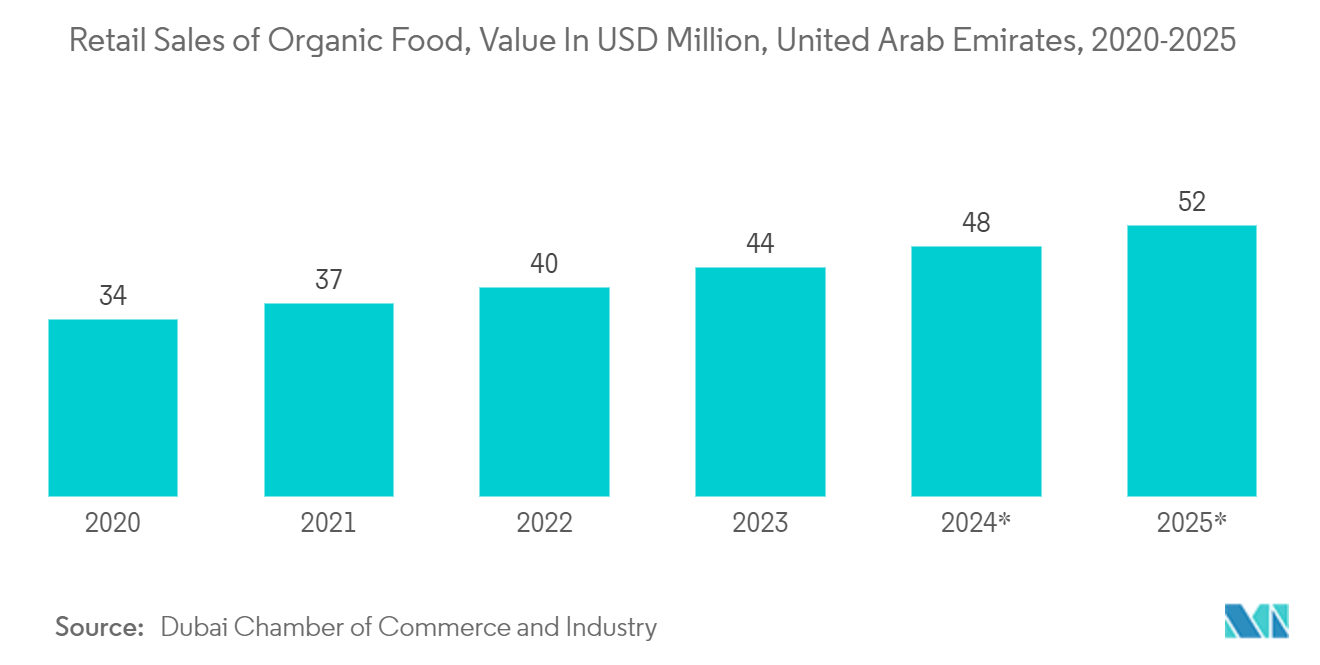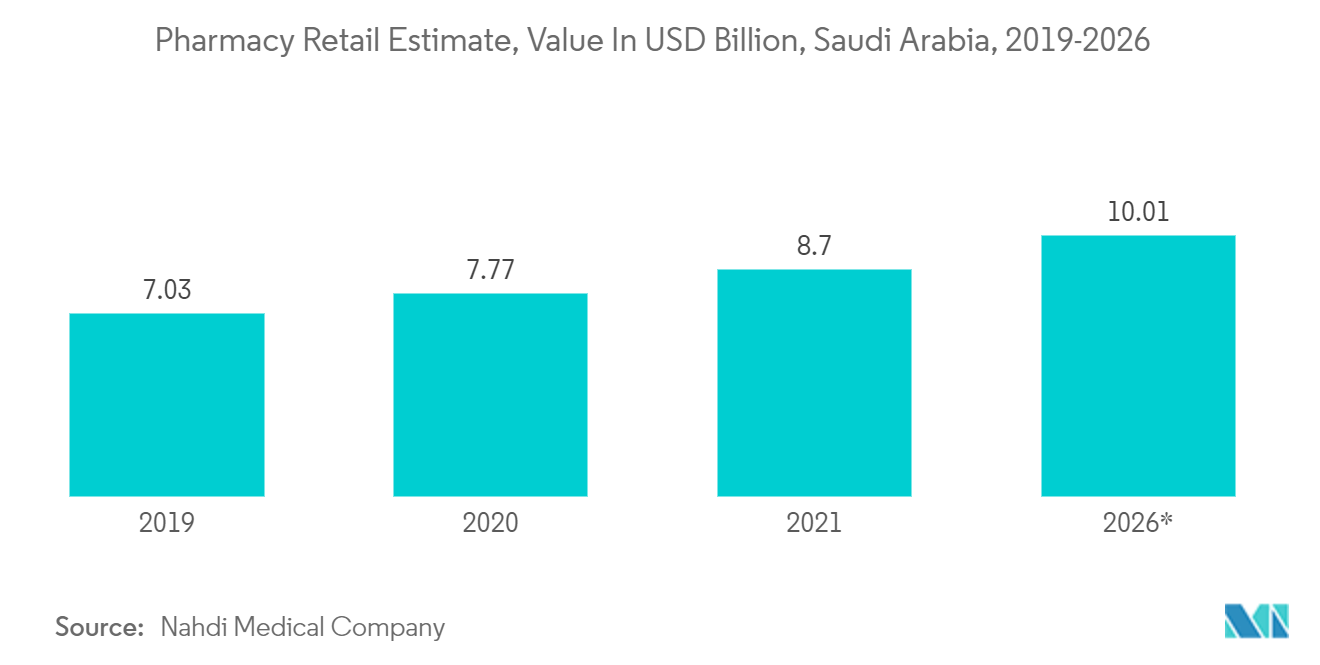Market Trends of GCC Rigid Plastic Packaging Industry
Food Segment to Hold Significant Market Share
- Food packaging stands out as a pivotal application for plastics in the GCC. Specifically, the demand for rigid plastic packaging is on a notable upswing. This surge is largely attributed to plastics' inherent advantages, notably their lightweight nature and cost-effectiveness, which have led the industry to pivot away from traditional materials like paperboard, metals, and glass.
- Moreover, the conservative food sector in the GCC has been steadily expanding, buoyed by concerns about economic and international relations. These dynamics are poised to propel the growth of the rigid plastic packaging market further.
- Notably, GCC is experiencing a notable shift in consumer preferences, gravitating toward fresh, frozen, and baked foods. This evolving palate, marked by a growing emphasis on health-conscious choices and a willingness to invest in premium fresh products, is a key driver behind the rising demand for rigid plastic packaging solutions.
- Many regional packaging firms are bolstering their production capacities, which is evident in their investments in new facilities tailored for food packaging. This underscores the region's promising growth trajectory.
- As the United Arab Emirates, alongside potentially other GCC nations, witnesses a surge in organic food sales, the food and beverage sector emerges as a significant consumer of rigid plastic packaging. This packaging finds its place in various applications, from bottled beverages to fresh produce containers and sealed packaging for processed organic foods.
- Highlighting the growth, the Dubai Chamber of Commerce and Industry reported that the sale of organic food in the United Arab Emirates, valued at approximately USD 34 million in 2020, is projected to reach USD 52 million by 2025. Therefore, with the rising food sales across the country, the demand for rigid plastic packaging options like plastic bottles, trays, containers, and closures is also expected to increase.

Saudi Arabia to Register Fastest Growth
- Saudi Arabia's demand for rigid plastic packaging solutions has been witnessing growth across end-user industries such as food, beverage, consumer goods, cosmetics, and pharmaceuticals. The demand is primarily attributed to rapid urbanization, which usually translates to increased consumer spending and production of consumer goods, a large expatriate population, and the changing dietary habits of the resident citizens.
- The country has been implementing several initiatives and regulatory reforms, such as Saudi Vision 2030 and the National Industrial Development and Logistics Program (NIDLP), which are expected to increase regional industrial production. This is expected to create considerable demand for packaging products from the region's non-oil sector.
- Furthermore, according to the Saudi Arabian General Authority for Investment (SAGIA), spending on food services will increase by 6% per annum over the next five years. The increase in food delivery options is due to the separation between food preparation and consumption location.
- Additionally, Saudi Arabia is home to an increasing number of restaurants, and the food manufacturing sector benefits from the growth in population and income, lifestyle changes, state support, and favorable trade agreements. The demand for disposable packaged foods is growing, and more multinational companies are entering the market. This is expected to drive significant growth opportunities for market vendors in the coming years.
- The pharmaceutical industry places a strong emphasis on packaging safety and integrity to shield its contents from contamination and damage. Rigid plastics offer durability, tamper-evident features, and the ability to extend product shelf life, making them the preferred choice. With an expanding pharmacy retail market, the demand for robust packaging solutions, especially rigid plastics, is set to surge.
- Nahdi Medical Company projects that the pharmacy retail market in Saudi Arabia will grow to USD 10.01 billion by 2026, up from USD 8.70 billion in 2021. This significant growth underscores the need for advanced packaging solutions to meet the evolving demands of the market, ensuring that products remain safe and effective throughout their shelf life.


